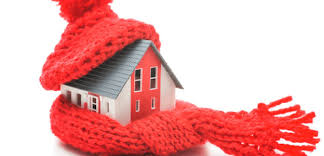
Are you (and your home) ready for Winter?
As a person born and raised in Michigan, I can assure you that winter comes every year. Yes, I know that that statement sounds a little funny because it is so obvious, however; it does seem to sneak up on us in all of our business.
We all know that the winter does some things that we should plan for and things that we should check on and/or adjust to make the best of the colder months. The more obvious thoughts are pertaining to heating and energy but there is a small list of things to do to not end up with repairs or unexpected and untimely maintenance.
Some quick outside things to do would consist of making sure that all of your hoses are disconnected and that the spigots are the frost-free type. Also, it is wise to disconnect, drain, and store all garden sprayers indoors for extended life of these tools. Drain and/or empty all bird baths, watering pales and hoses.
It is also good to irrigate and mulch bushes, ornamental trees and annuals just before winter as this helps keep the roots moist and healthy through the winter. This is especially helpful if the autumn season is unusually dry. Also, keep in mind that some types of trees and plants should be pruned before winter, some during winter and some in the spring and it is good to learn about what types of plants you have and the best ways to care for them.
For our homes, we know that our furnace is going to get a workout over the winter months and so it is good to have an annual check up (tune up) and inspection by a licensed professional. The easiest procedure that will increase your furnaces efficiency and lifespan is to change the filter once a month and per occasion of heavy amounts of dust generation. Another task that will help with energy efficiency is to seal the joints where the duct work comes together. Also, if you are ambitious and want to save all you can, insulate all of the heating ducts. It is not necessary to insulate the return air ductwork. Lastly, remove all registers and clean them and the register boot (the duct end where the register is seated). Even a small amount of dust, cobweb material, pet hair, etc.. can substantially reduce air flow.
Regarding insulation, many people are not aware that there are two kinds of thermal loss. One type is temperature transfer and the other is air infiltration. When we talk of insulation, the term R-value inevitably enters the conversation. A wall is R-19, a roof is R-30 —what does this mean? Essentially R-value is a measure of thermal resistance, or the ability to prevent the transfer of heat. The higher the number, the longer the time for thermal transfer to occur. In that walls are generally inaccessible, adding additional insulation may not be an option without removal of either the interior side (drywall) or siding if exterior is preferred.
Air transfer is fairly common and in general, fairly easy to remedy. You can hire a professional air ratings technician to perform a blower door test and provide a report for air infiltration/loss. These same professionals will generally also provide an estimate for performing the needed repairs. Alternately, if you are handy and wish to go it alone, try this on a windy day, using a piece of light weight material, (such as tissue paper) hold the material next to doors, windows, vent openings, electrical plugs & switches, etc.. if you see visible evidence of movement, you have air infiltration. Many entrance doors have a slight gap underneath. Even 1/16” over the width of your entrance door could be equal to a 2.5” hole in the wall. Normally, your air infiltration repairs will be limited to items such as new threshold seal or door sweep, weather stripping, a proper type of caulk, etc. In some cases, you may wish to use plastic and tape or a type of removable strip seal product as made by 3-M.
One last topic to think about before winter bares its harsh winds and bitter cold temps is your vehicle. Cars and trucks have a small list of things to check before winter as well. First, your tire pressure. It doesn’t take too many degrees of temperature change for the tires to lose pressure so for safety purposes and fuel mileage, make sure that you check your tire pressure and fill them to the manufacturer’s specifications. Also, check your vehicles fluids. The engine coolant should be tested for proper protection against freezing. Additionally, check your windshield washer fluid. With summer types and winter types, you’ll want to be extra sure that your system doesn’t freeze up when you need it the most.
With a few things done you can save some money and add comfort to the coming winter months. Make your home a warm and welcoming place for you to retreat to when it is cold outside.
